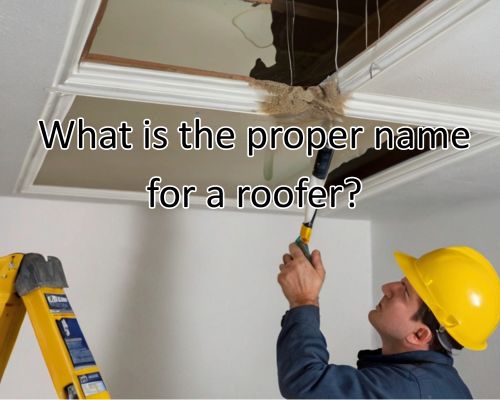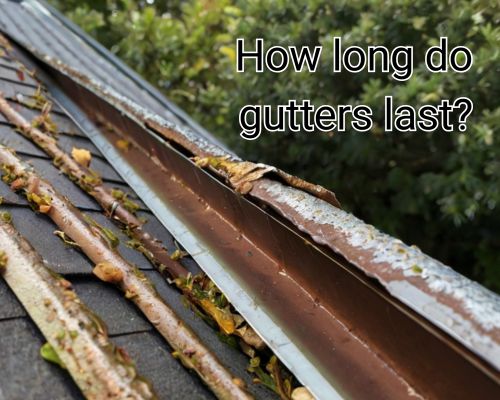When you need roof repairs or a full replacement in New Jersey, USA, knowing exactly who to call is crucial. You might wonder: What is the proper name for a roofer? Is it just “roofer,” or is there a more formal title used within the industry? With CJ Commercial Roofing NJ, let’s dig deep into the professional roofing world, clear up the confusion, and make sure you’re hiring the right expert for your home or business.

The Formal Name for a Roofer
In professional terms, a roofer is often referred to as a roofing contractor. In contexts where certifications and licensing are discussed, the term “licensed roofing contractor” or “certified roofing specialist” becomes the proper designation.
While “roofer” is perfectly acceptable in casual conversation, if you're speaking to someone about a major residential or commercial roofing project in New Jersey, using terms like roofing contractor, roofing specialist, or roof installation expert is more appropriate.
Different Types of Roofing Professionals
In New Jersey's dynamic roofing market, you’ll encounter several specific titles that go beyond the generic "roofer":
- Residential Roofing Contractor: Focuses on homes, townhouses, and apartment buildings.
- Commercial Roofing Contractor: Specializes in roofing systems for commercial buildings like offices, warehouses, and shopping centers.
- Roof Inspector: A professional who examines roofs for damage, wear, or compliance issues.
- Roof Repair Technician: Concentrates specifically on fixing leaks, damaged shingles, and minor issues.
- Roof Installation Specialist: Handles complete roof installations, often including new builds or full replacements.
Each of these roles comes with specific expertise. For instance, if you’re dealing with an aging slate roof in Hoboken or an asphalt shingle repair in Princeton, hiring the right specialist can mean the difference between a job well done and a costly mistake.
Why Proper Titles Matter in New Jersey's Roofing Industry
New Jersey enforces strict licensing and insurance regulations for roofing contractors. The New Jersey Division of Consumer Affairs requires contractors working on residential projects over a certain dollar amount to register with the state and often to carry proper bonding and insurance.
When searching for a professional, it's important to verify if you're dealing with a licensed New Jersey roofing contractor rather than just a handyman posing as a roofer. This protects you legally and financially if problems arise during or after the project.
As of 2025, areas like Jersey City, Newark, and Trenton are experiencing a boom in both residential and commercial renovations, meaning the demand for properly credentialed roofing experts has never been higher.
Skills and Certifications Professional Roofers Possess
Top-tier roofing contractors in New Jersey aren’t just good with hammers; they often carry a range of certifications, including:
- GAF Master Elite Certification (held by less than 2% of all roofing contractors)
- CertainTeed SELECT ShingleMaster™ Certification
- OSHA Safety Certifications
- NRCA (National Roofing Contractors Association) Membership
By hiring a roofing contractor with recognized certifications like CJ Commercial Roofing NJ, you ensure better materials, warranties, and workmanship standards.
In areas like Cherry Hill, Morristown, and Atlantic City, roofing professionals are often required to stay up-to-date with modern roofing technologies like energy-efficient roofing, solar panel installations, and advanced waterproof membranes.
Common Roofing Services Offered in New Jersey
Knowing what services local roofing professionals offer will help you identify the proper title based on your needs. Common offerings include:
- Roof Inspections (critical for home purchases in areas like Montclair)
- New Roof Installations (popular for new builds in suburban developments)
- Roof Repairs (essential after Nor’easters or seasonal storms)
- Roof Replacements (often necessary for aging homes along the Jersey Shore)
- Gutter Installation and Repair (yes, roofers often handle gutters too!)
Local businesses like Garden State Roofing, Jersey Strong Roofers, and Atlantic Roofing Systems have built strong reputations by offering comprehensive services while emphasizing their licensing and specialty certifications.
LSI Keywords and Related Terms You Should Know
To better understand the nuances when searching online for roofing professionals in New Jersey, familiarize yourself with these related terms:
- Roofing services near me
- Best roofing contractor in New Jersey
- Residential roofing company
- Certified roofer NJ
- Commercial roofing services
- Roof repair estimates New Jersey
- Flat roof specialists
- Shingle roofing contractors
- Emergency roof repair NJ
Incorporating these search terms helps homeowners and property managers connect with the most qualified professionals faster.
Questions to Ask Your Roofing Contractor
Before hiring someone for a roofing project in New Jersey, make sure to ask:
- Are you licensed and insured in New Jersey?
- What certifications do you have?
- Can you provide references from recent local projects?
- Do you offer manufacturer-backed warranties?
- What’s your experience with roofing materials used in this area?
Many roofing companies serving places like Toms River or Morristown specialize in coastal-resistant materials due to New Jersey’s sometimes brutal weather conditions.
Final Thoughts: Know Who You’re Hiring
So, what is the proper name for a roofer? In casual conversation, “roofer” is fine. But when you're hiring, especially for significant projects in New Jersey, always look for a licensed roofing contractor, roofing specialist, or certified roofing expert. Titles matter — they indicate professionalism, expertise, and compliance with local laws.
The next time you're navigating roofing needs in New Jersey — from fixing a roof leak after a Nor’easter in Atlantic Highlands to installing a brand-new energy-efficient system in Princeton — you’ll know exactly who to call.
✅ Pro Tip: Always check the New Jersey Division of Consumer Affairs Contractor Registration database before signing any contracts.
Roofing may seem like a simple job at first glance, but in reality, it’s a complex profession demanding expertise, precision, and up-to-date knowledge — all the more reason to know the proper name and credentials of the person you’re trusting with your roof!










